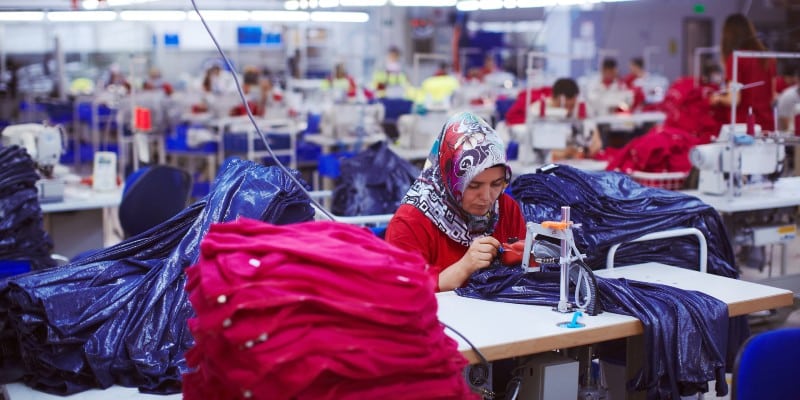In 2020, the Coronavirus pandemic dealt a major blow to hundreds of millions of workers globally, especially those in the garment industry. The Wall Street Journal reported that hundreds of thousands of workers in this industry have not only lost their jobs, but may have also lost their path out of poverty.
Although the statement might seem hyperbolic, there is some truth to it. Garment manufacturing is seen almost as a right of passage for nations that want to escape poverty; Singapore, South Korea, Taiwan, and China invested heavily in making inexpensive clothing for consumers in wealthier countries, and Vietnam and Cambodia seemed to be on their way prior to the pandemic. Manufacture cheap clothing, export it to wealthier nations, and then capitalize on this sector to industrialize further. This activity of leveraging low-wages, often in a country with little to no labor regulations, is called an efficiency innovation. Although efficiency innovations play a critical role in developing robust economies, by themselves they’re not a strong enough foundation on which to build a sustainable development strategy.
Efficiency innovations enable organizations to do more with less enabling companies to boost profits and free up cash. They also provide workers in emerging economies with jobs, albeit low-wage jobs (many garment workers make around $5 a day). The problem, however, is that these jobs are typically footloose and lack social safety nets. When a nation anchors much of its growth on efficiency innovations, it can be devastating during an economic crisis.
Bangladesh, for instance, has become one of the world’s largest clothing manufacturers, accounting for up to 85% of the nation’s export earnings. But since the global pandemic began, of the four million workers in the sector, more than one million have lost their jobs and another half a million are at risk of losing theirs also. Most people who have lost their jobs don’t have access to unemployment checks from the government while they search for something else. Imagine the devastation to the local and regional economies in the country. Although every country is experiencing economic hardship, Bangladesh, and other nations dependent on jobs from efficiency innovations, have been disproportionately affected. But there is hope.
Market-creating innovations can ignite the engine of development
In The Prosperity Paradox: How Innovation Can Lift Nations Out of Poverty, my co-authors and I explain the importance of a different type of innovation for long-term and robust development. Market-creating innovations transform complicated and expensive products into products that are simple and affordable making them accessible to many more people who historically couldn’t afford existing products on the market. These people are called nonconsumers.
Market-creating innovations are especially impactful because they lead to a flurry of economic activity and create a solid foundation for development to occur. For example, Victory Farms in Kenya is creating a new market in the country to make fish more affordable to the average Kenyan. In order to do this, the company not only has to figure out a model to sustainably farm their fish, but also develop a sales, marketing, distribution, and service component. Even during this pandemic, the innovative company has grown and continues to expand its operations.
As market-creating innovators serve a growing number of nonconsumers, three things happen. First, they create new jobs to make, market, distribute, and sell the products to the vast new market (many of these are higher paying jobs and are often more stable than jobs that come with efficiency innovations). Second, the organizations’ profits generate a new source of tax revenue for governments as nonconsumers begin to engage in the economy, which are used to help build infrastructure and develop institutions. Third, as other innovators join the new market and see firsthand the benefits of targeting nonconsumers, a culture of innovation and entrepreneurship ensues, creating a virtuous cycle that leads to more innovation. History has shown that this process not only eradicated poverty in many of today’s wealthy countries, but it also helped them develop a foundation for widespread prosperity.
As the world struggles to recover from the pandemic, the most viable way to help economies become prosperous and build long-term resiliency is through investments in market-creating innovation. To that end, this year the Christensen Institute is excited to collaborate with the MIT Legatum Center for Development and Entrepreneurship on a first-of-its-kind, Market-Creating Innovation Bootcamp, initially offered in seven countries across Africa. The Bootcamp is designed to empower entrepreneurs with insights from research, community, and coaching. Our hope is that by seeding new market-creating innovations in emerging markets, entrepreneurs in these economies will build companies that can create inclusive prosperity for all.
To learn more about the Bootcamp, see: https://legatum.mit.edu/mci/


